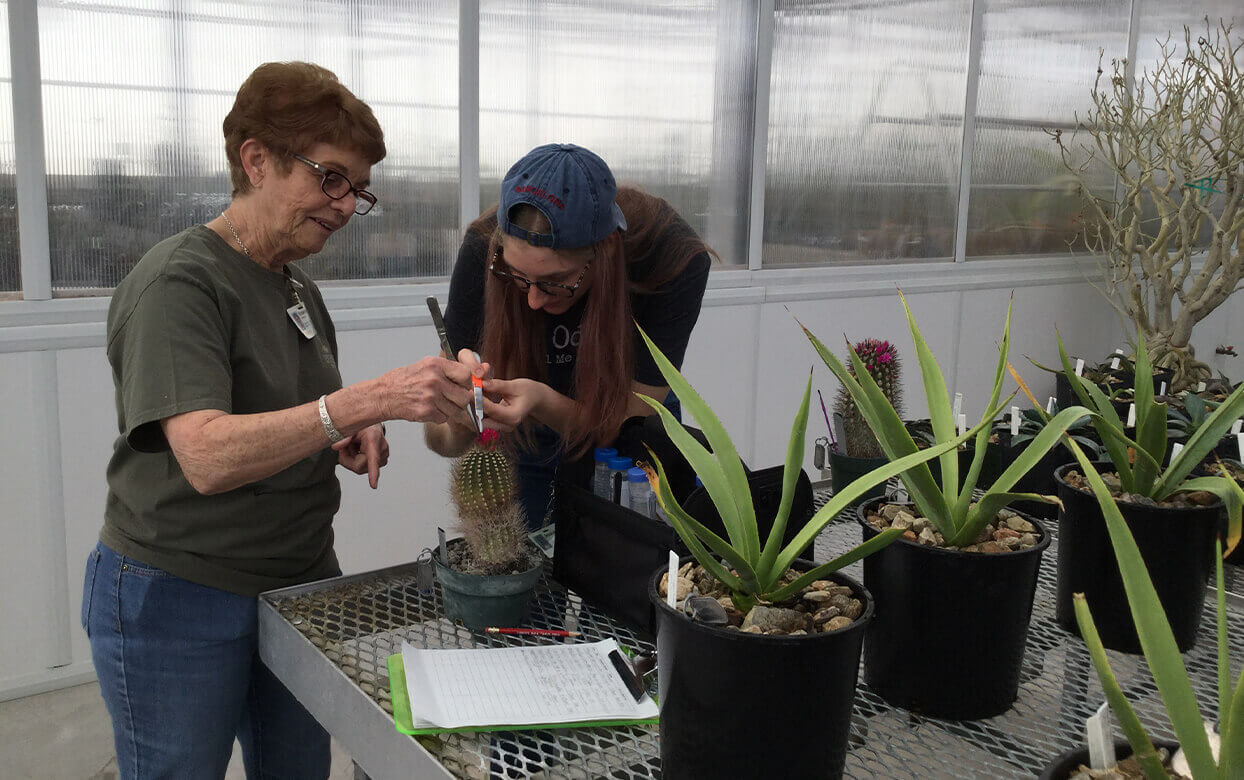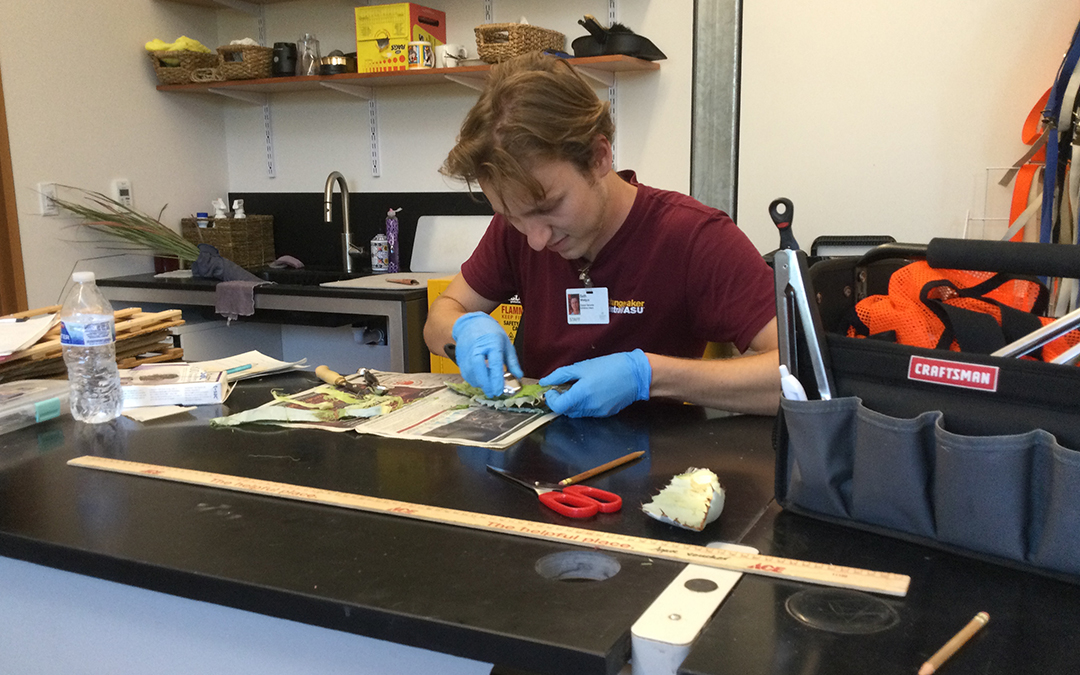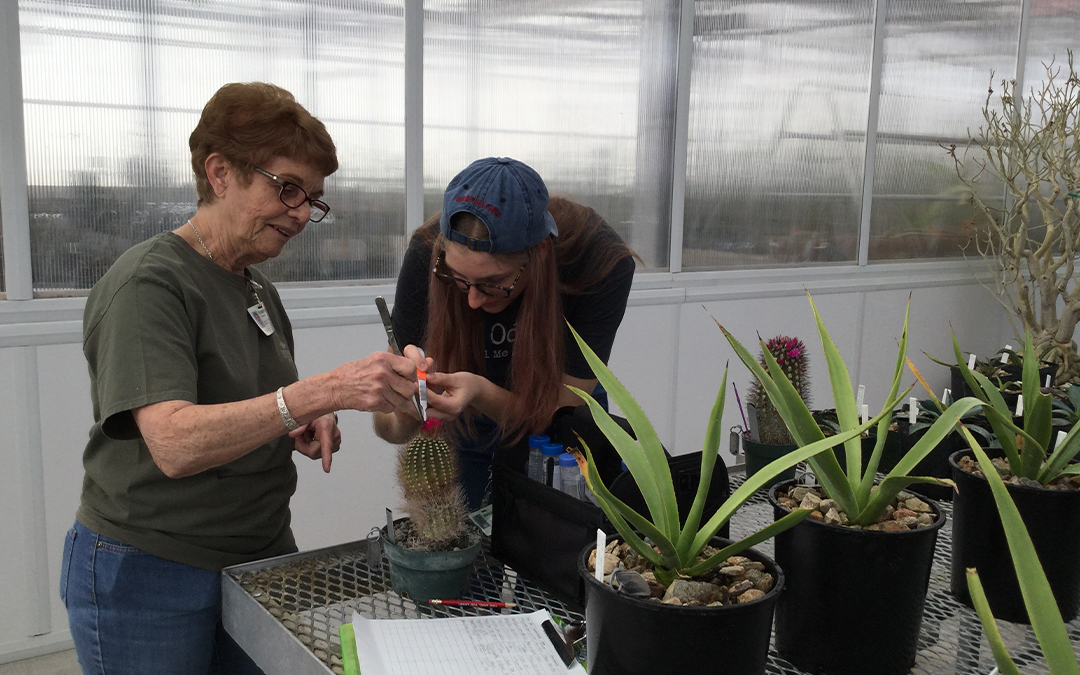The plants at Desert Botanical Garden typically bask in balmy weather, but parts of them are endlessly chilling out in Antarctic temperatures.
That’s because Garden researchers are collecting genomic samples of plants for preservation efforts as part of a global initiative. The Global Genome Initiative, spearheaded by The Smithsonian, aims to collect half of the world’s genomic diversity by 2022, as well as creating a network of biorepositories, or sub-zero freezers, among different institutions across the country to store these genomic samples.
In order to understand life, scientists look at entire DNA sequences of organisms. DNA reveals information about how plants evolved and how certain genes allow them to adapt to their environment. Storing DNA is important for scientific research and conservation, says Joni Ward, the Garden’s plant registrar.
But only a small fraction of the nearly 350,000 extant land plants — those are the group of green plants that make up vegetation on Earth — have had their genome sequenced, and these efforts haven’t been evenly distributed across different plant groups, according to a 2016 research paper.
“As we move forward into whatever future we’re going to have, we’ll be able to have this information about plant diversity, plant evolution and plant function,” says Shannon Fehlberg, the Garden’s Dorrance Family Foundation conservation biologist. “All the things that are contained in the DNA will be preserved, so we can always go back and see that information for every plant that’s in the bank, even if the plant becomes extinct.”
To achieve this monumental task, the initiative is collaborating with botanical gardens like the Garden, which focuses its efforts on cactus and agave.
Garden scientists clip flowers, leaves and other tissues from the Garden’s collection, insert them into tea bags and immerse them into silica gel. Then they transfer the dried tissue into coin envelopes and store them in more silica gel in a freezer at minus 20 degrees Celsius.
For many plants, the boundaries between species are blurry. Thus, accurately classifying flora and understanding how their genes help them survive can enhance conservation efforts.
“One of the challenges when you’re trying to determine if a species needs to be listed as endangered is you’ve got to look at it at the molecular level to make sure [about its taxonomy]. These plants look different, but are they really different?” Ward says.
By December 2021, the Garden completed the banking process for 270 specimens. The initiative is advancing the goals of the Garden’s Strategic Plan and strengthening its research focus by building a robust collection complete with seeds, herbarium vouchers, tissue samples for DNA extraction and photographs for each plant.
“We want the public and researchers to know that we are not just a pretty Garden,” says Raul Puente-Martinez, the Garden’s curator of living collections and research botanist. “A very important function of the Garden is not just having a display at the Garden but making it available to the research community at the national level and also worldwide.”
References
Vallée, G. C., Muñoz, D. S. & Sankoff, D. Economic importance, taxonomic representation and scientific priority as drivers of genome sequencing projects. BMC Genomics 17, 782 (2016).





